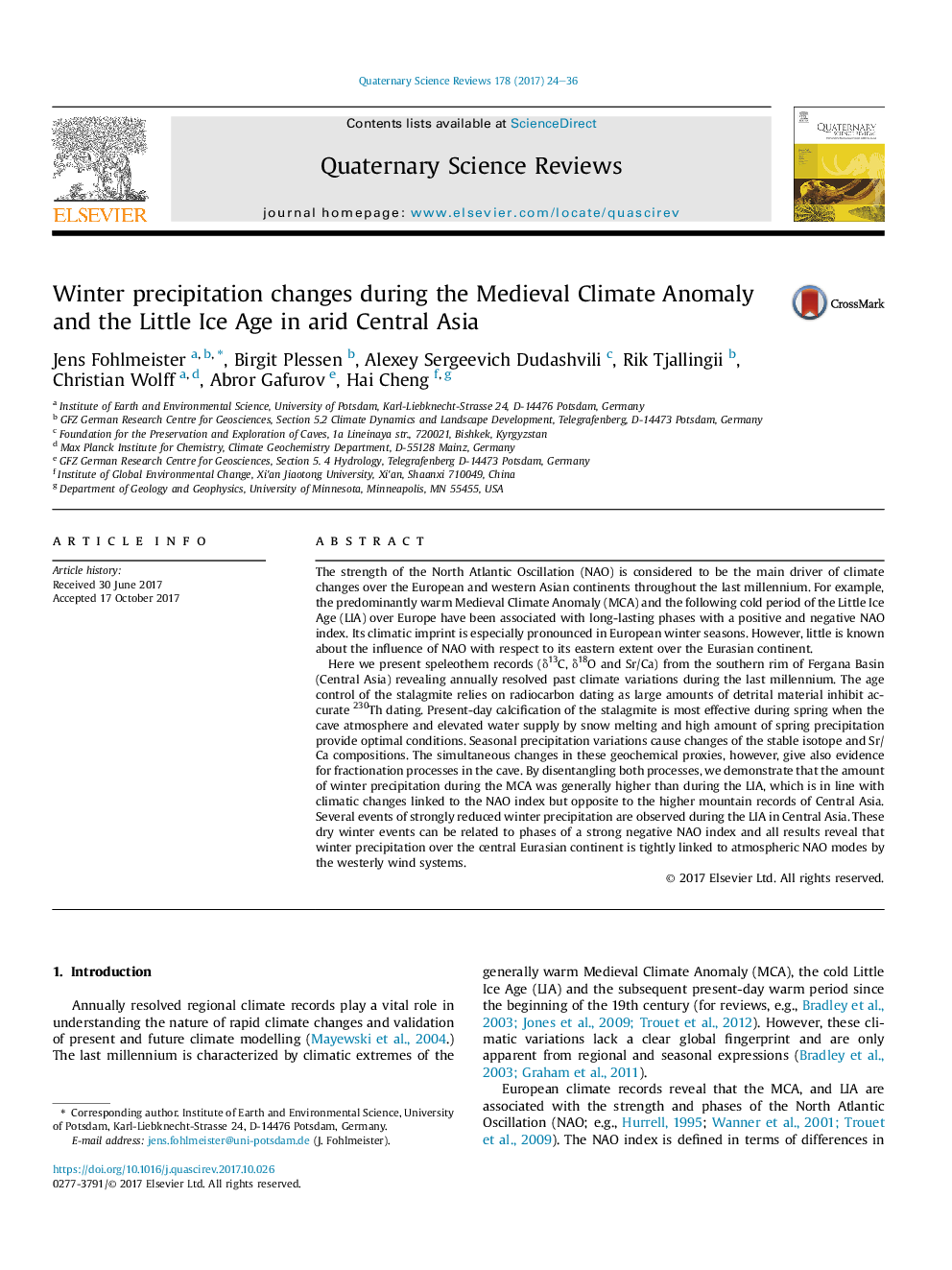| Article ID | Journal | Published Year | Pages | File Type |
|---|---|---|---|---|
| 8915063 | Quaternary Science Reviews | 2017 | 13 Pages |
Abstract
Here we present speleothem records (δ13C, δ18O and Sr/Ca) from the southern rim of Fergana Basin (Central Asia) revealing annually resolved past climate variations during the last millennium. The age control of the stalagmite relies on radiocarbon dating as large amounts of detrital material inhibit accurate 230Th dating. Present-day calcification of the stalagmite is most effective during spring when the cave atmosphere and elevated water supply by snow melting and high amount of spring precipitation provide optimal conditions. Seasonal precipitation variations cause changes of the stable isotope and Sr/Ca compositions. The simultaneous changes in these geochemical proxies, however, give also evidence for fractionation processes in the cave. By disentangling both processes, we demonstrate that the amount of winter precipitation during the MCA was generally higher than during the LIA, which is in line with climatic changes linked to the NAO index but opposite to the higher mountain records of Central Asia. Several events of strongly reduced winter precipitation are observed during the LIA in Central Asia. These dry winter events can be related to phases of a strong negative NAO index and all results reveal that winter precipitation over the central Eurasian continent is tightly linked to atmospheric NAO modes by the westerly wind systems.
Related Topics
Physical Sciences and Engineering
Earth and Planetary Sciences
Geology
Authors
Jens Fohlmeister, Birgit Plessen, Alexey Sergeevich Dudashvili, Rik Tjallingii, Christian Wolff, Abror Gafurov, Hai Cheng,
